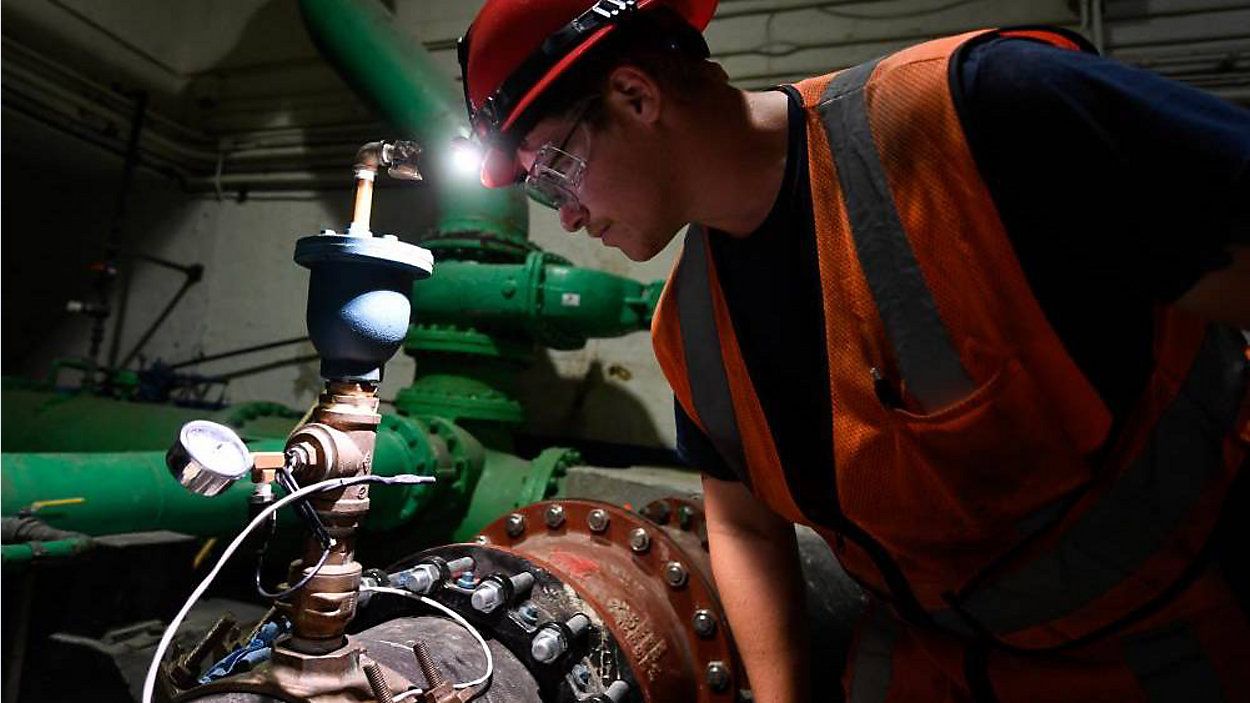PEARL HARBOR, Hawaii — The Navy Closure Task Force-Red Hill will start venting the fourth of 14 tanks at the Red Hill Bulk Fuel Storage Facility on Tuesday, after notifying the Hawaii Department of Health.
In March, the Navy took over responsibility for the closure process for Red Hill, after the Joint Task Force-Red Hill drained 104 million gallons of fuel from the tanks.
The final closure process includes four phases: removing 28,000 gallons of sludge from the tanks, cleaning 16 storage tanks and four surge tanks, removing over 10 miles of pipeline that runs between the Red Hill facility and Joint Base Pearl Harbor-Hickam, and completing environmental remediation around the facility.
NCTF-RH is currently undergoing the first of these phases. To remove the sludge from the Red Hill tanks, Navy officials said the tanks must first be vented.
On Tuesday, NCTF-RH will start venting Tank 5 at the facility, according to a news release.
The initial venting phase eliminates any residual volatile organic compounds from the tanks by pushing clean air from the bottom of the tank and exhausting it upward through a ventilation system. The venting process typically takes three to six weeks, according to Navy officials.
To get DOH’s approval to vent the tanks, the Navy was required to install nine air quality monitoring stations at the perimeter of the Red Hill facility.
During venting operations, the air quality monitoring data will be updated hourly on the NCTF-RH mobile app and daily on the website.
During prior tank ventilation, VOC levels remained below the limit, at an average of .003 parts per million volume total VOCs, according to the NCTF-RH.
If air quality levels reach 20 parts per million by volume at the stack, where the ventilation system’s exit point is located, NCTF-RH will cease operations until levels have decreased.
NCTF-RH said if air quality levels reach 38 parts per million by volume, they will alert regulators, the public and the media. According to the Environmental Protection Agency, this is Level 1 exposure. Human exposure at these levels may include discomfort, irritation or certain asymptomatic non-sensory effects. The EPA considers air quality levels at 144 parts per million by volume as Level 2 exposure. These conditions may include long-lasting adverse health effects or an impaired ability to escape.
DOH’s conditional approval of the Navy’s air quality monitoring plan requires NCTF-RH to notify the public at least 12 hours before they vent a tank, limit the number of tanks that may be vented at any time to two, and limit the number of tanks that may be vented in a calendar year to six.
Michelle Broder Van Dyke covers the Hawaiian Islands for Spectrum News Hawaii. Email her at michelle.brodervandyke@charter.com.



